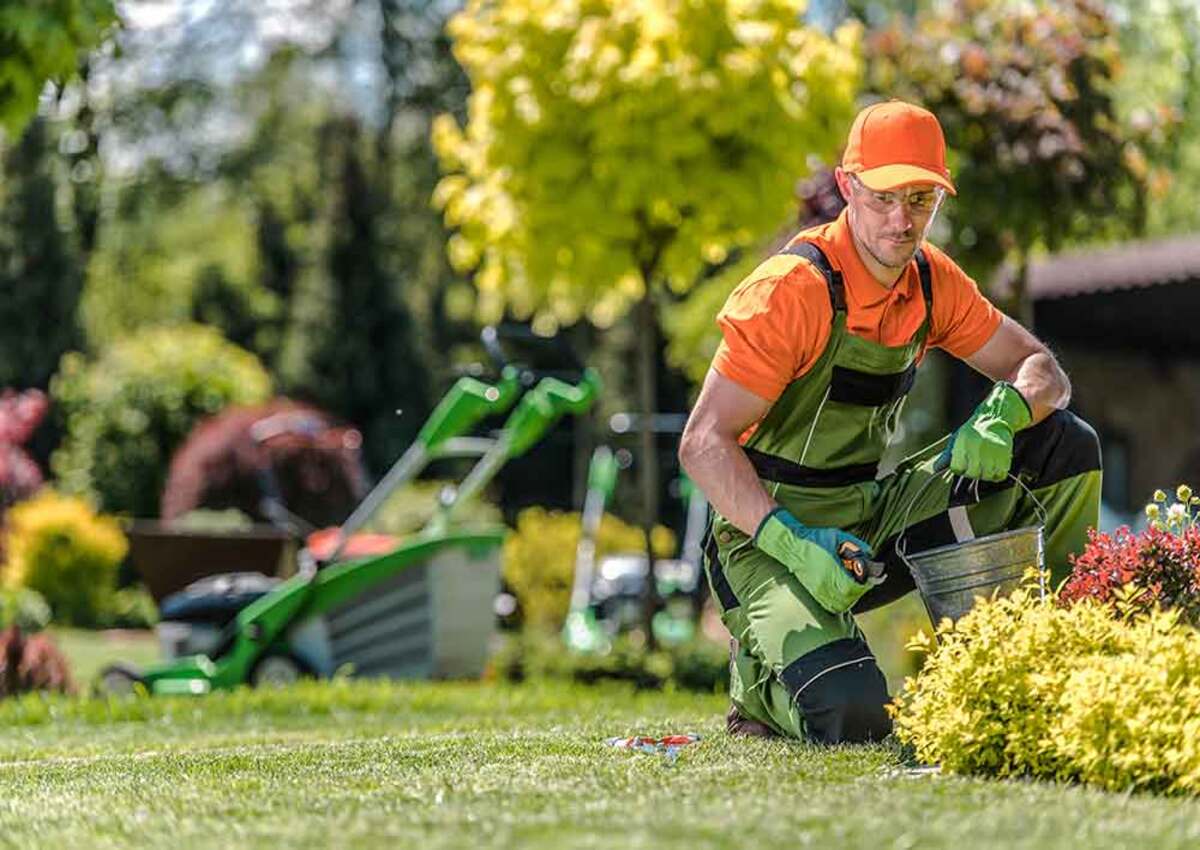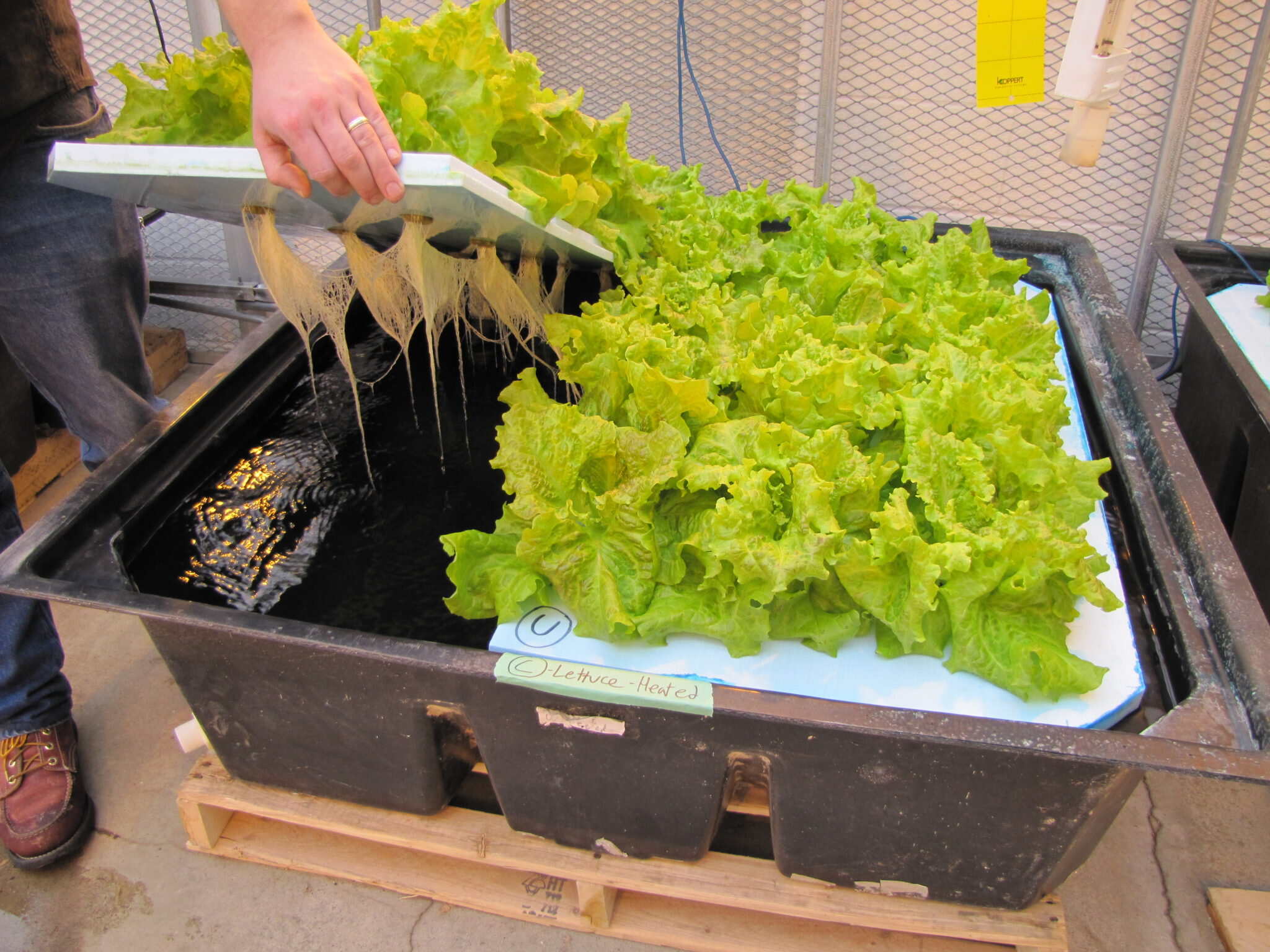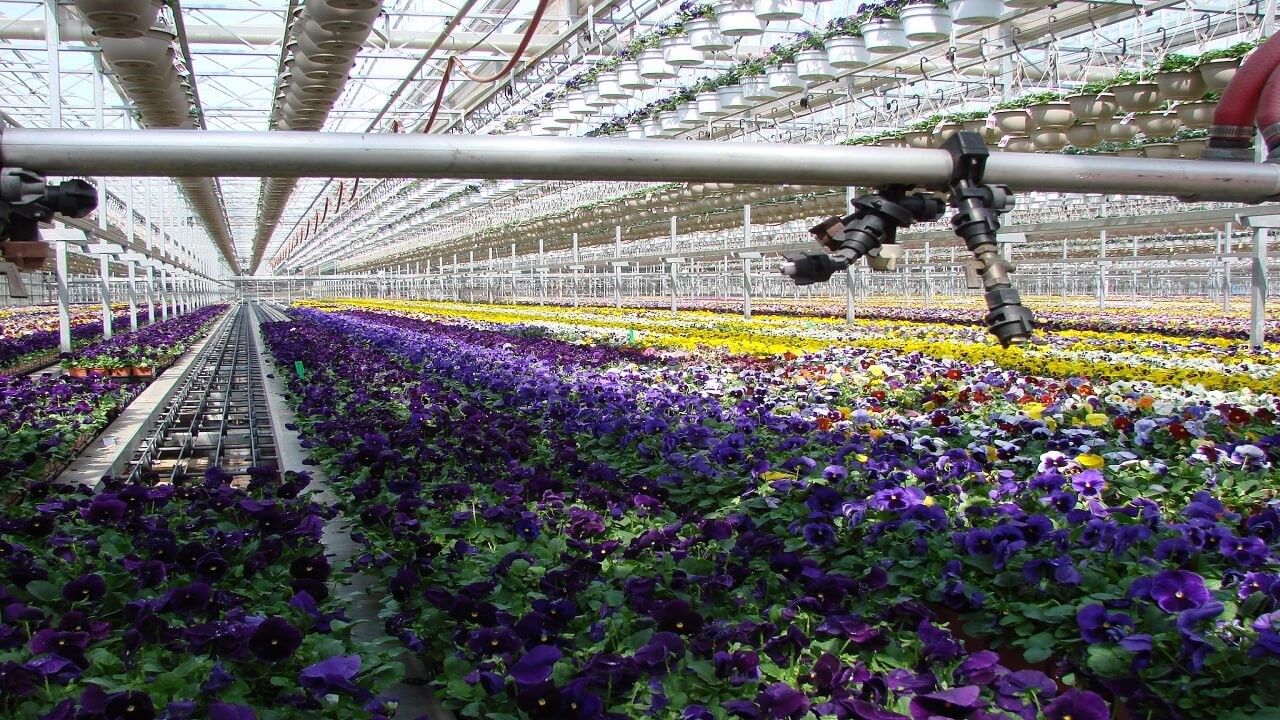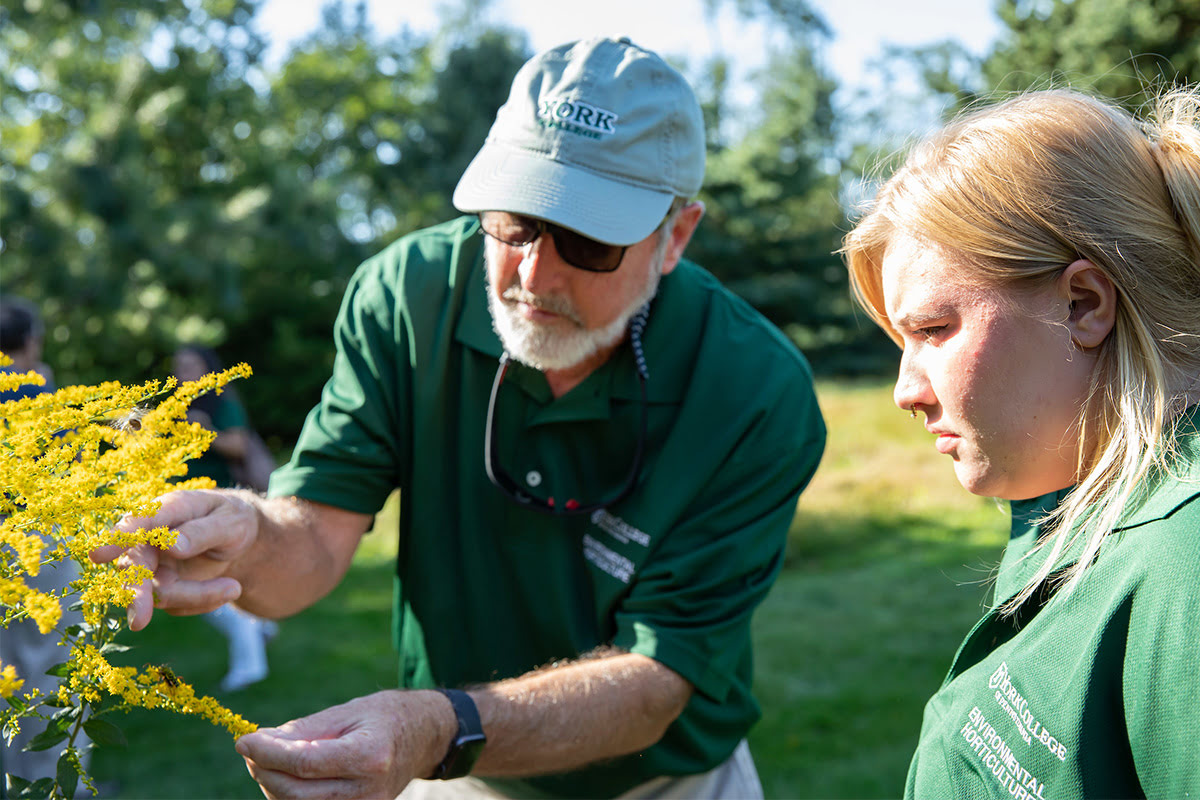Home>Garden Design>Planning Your Garden>How To Get Leads For Landscaping


Planning Your Garden
How To Get Leads For Landscaping
Modified: January 22, 2024
Learn effective strategies for planning your garden and generating high-quality leads for your landscaping business. Maximize your success with expert tips and advice.
(Many of the links in this article redirect to a specific reviewed product. Your purchase of these products through affiliate links helps to generate commission for Chicagolandgardening.com, at no extra cost. Learn more)
Table of Contents
- Introduction
- Understanding the Importance of Lead Generation for Landscaping Businesses
- Identifying Your Target Audience
- Creating a Compelling Website
- Optimizing Your Website for Search Engines
- Utilizing Social Media for Lead Generation
- Implementing Email Marketing Campaigns
- Generating Leads through Online Advertising
- Leveraging Local Directories and Listings
- Networking and Building Relationships
- Tracking, Analyzing, and Improving Lead Generation Efforts
- Conclusion
Introduction
Welcome to the world of landscaping, where beauty meets functionality and natural elements create stunning outdoor spaces. As a landscaping business owner, you know that one of the keys to success lies in attracting and acquiring new customers. In order to grow your business and increase your revenue, it’s crucial to have a steady stream of leads – potential customers who are interested in your services.
Lead generation is the process of identifying and attracting individuals who have shown an interest in your services and have the potential to become customers. In the digital age, where most customers turn to the internet to find services they need, having an effective lead generation strategy is essential for any landscaping business.
But how exactly do you go about generating leads for your landscaping business? In this article, we will explore various strategies and tactics that can help you attract potential customers and turn them into loyal clients. From optimizing your website for search engines to leveraging social media platforms, we will cover the essential steps to take in order to boost your lead generation efforts.
By the end of this article, you will have a comprehensive understanding of the key strategies and techniques that can help you generate leads for your landscaping business. So, let’s dive in and explore the world of lead generation in the landscaping industry!
Understanding the Importance of Lead Generation for Landscaping Businesses
Lead generation is the lifeblood of any business, and the landscaping industry is no exception. Without a constant flow of leads, it becomes challenging to maintain a steady customer base and grow your business. Generating leads is essential for the following reasons:
- Increased Revenue: Generating leads allows you to expand your customer base and ultimately increase your revenue. With more leads, you have a greater opportunity to convert them into paying customers and secure more projects.
- Targeted Marketing: When you have a pool of leads, you can tailor your marketing efforts to reach a specific group of individuals who are interested in your landscaping services. This targeted approach results in a higher conversion rate and a more cost-effective marketing strategy.
- Building Brand Awareness: Lead generation provides an opportunity to showcase your landscaping expertise and establish your brand in the industry. By consistently attracting new leads, you increase your visibility and reputation, which helps to grow your business in the long run.
- Customer Retention: Generating leads not only involves acquiring new customers but also nurturing your existing ones. By staying in touch with your leads, you can build lasting relationships and encourage repeat business, leading to customer loyalty and word-of-mouth referrals.
Understanding the importance of lead generation is crucial for landscaping businesses. By recognizing the value of generating leads and actively implementing strategies to attract interested individuals, you are setting yourself up for long-term success.
Now that we’ve established the significance of lead generation in the landscaping industry, let’s explore how to identify your target audience and effectively capture their attention in the next section.
Identifying Your Target Audience
Before you start generating leads, it’s important to have a clear understanding of who your target audience is. Your target audience consists of individuals who are most likely to be interested in your landscaping services and have the potential to become your customers. By identifying your target audience, you can tailor your marketing efforts to effectively reach and engage with them.
Here are some steps to help you identify your target audience:
- Define Your Services: Start by determining the specific landscaping services you offer. Are you focused on residential landscaping or do you also provide commercial landscaping? Do you specialize in landscape design, installation, or maintenance? By clarifying your services, you can better understand the needs and preferences of your target audience.
- Research Local Market: Conduct thorough market research to identify the demographics and characteristics of your local area. Analyze factors such as income levels, age groups, homeowner vs. renter ratios, and property sizes. This information will help you determine which segments of the population are more likely to be interested in landscaping services.
- Identify Pain Points and Desires: Understand the pain points and desires of your target audience when it comes to landscaping. Are they looking for low-maintenance solutions, eco-friendly options, or visually stunning landscapes? By knowing what your potential customers value and need, you can position your services to meet their specific requirements.
- Study Competitors: Research your competitors to see who they are targeting and how they position themselves in the market. Look at their customer reviews, testimonials, and online presence to gain insights into their customer base. This information can help you refine your own target audience and differentiate yourself from the competition.
Once you have identified your target audience, create buyer personas to better understand their needs, behaviors, and preferences. A buyer persona is a fictional representation of your ideal customer, including demographic information, interests, and motivations. This will guide your marketing efforts and ensure that your lead generation strategies are tailored to attract and resonate with your target audience.
Now that we have a clear understanding of who our target audience is, the next step is to create a compelling website that will capture their attention and encourage them to take action. This will be the focus of the next section.
Creating a Compelling Website
Your website serves as the online face of your landscaping business. It is a crucial tool for attracting and converting leads into customers. To effectively generate leads, your website needs to be compelling, user-friendly, and designed with the needs of your target audience in mind. Here are some key elements to consider when creating a website that drives lead generation:
- Clean and Professional Design: A visually appealing and well-designed website creates a positive first impression. Use high-quality images, a consistent color scheme, and clear typography to create a professional look and feel. Keep the layout clean and uncluttered, making it easy for visitors to navigate and find the information they need.
- Clear Call-to-Action: A call-to-action (CTA) is a prompt that encourages visitors to take a specific action, such as requesting a quote, scheduling a consultation, or signing up for a newsletter. Place CTAs strategically throughout your website, making them highly visible and compelling. Use action-oriented language and provide clear instructions to encourage visitors to take the next step.
- Mobile Responsiveness: With the rise of mobile devices, it is essential to have a website that is optimized for mobile viewing. Ensure that your website is responsive and adapts seamlessly to different screen sizes. A mobile-friendly website not only provides a better user experience but also improves your search engine rankings.
- Showcase Your Work: Displaying examples of your past projects or a portfolio of your work is a powerful way to showcase your skills and build trust with potential customers. Include high-quality images, detailed descriptions, and customer testimonials to demonstrate the quality and value of your services.
- Optimize Speed and Performance: Slow-loading websites can lead to high bounce rates and lost leads. Optimize your website’s speed and performance by compressing images, minimizing code, and choosing a reliable hosting provider. A fast-loading website creates a positive user experience and encourages visitors to stay engaged.
- Integrate Contact Forms: Include contact forms on relevant pages of your website to make it easy for visitors to get in touch with you. Keep the forms simple and concise, asking for essential information such as name, email address, and phone number. Make sure to respond promptly to inquiries to foster trust and show your dedication to customer service.
A compelling website is a key element in attracting and converting leads for your landscaping business. By focusing on design, user experience, and showcasing your expertise, you can create a website that not only captures the attention of your target audience but also encourages them to take the next steps towards becoming your valued customers.
Next, we will explore how to optimize your website for search engines, ensuring that your landscaping business is easily discoverable by individuals searching for your services online.
Optimizing Your Website for Search Engines
In today’s digital landscape, search engines play a crucial role in connecting potential customers to businesses. Optimizing your website for search engines, also known as search engine optimization (SEO), is essential for increasing your online visibility and driving organic traffic to your website. Here are some key strategies to optimize your website for search engines:
- Keyword Research: Conduct thorough keyword research to identify the terms and phrases that potential customers are using to search for landscaping services. Incorporate these keywords naturally throughout your website, including in your page titles, headings, content, and meta descriptions. This helps search engines understand the relevance of your website to users’ search queries.
- Quality Content: Create high-quality and informative content that provides value to your target audience. Develop blog posts, articles, and guides that address common questions, offer landscaping tips, and showcase your expertise. Incorporate your targeted keywords naturally within your content. Engaging and relevant content not only helps in search engine ranking but also encourages visitors to stay on your website longer and increases the chances of lead conversion.
- Optimized Metadata: Metadata includes page titles, meta descriptions, and alt tags for images. Craft compelling and keyword-rich page titles that accurately describe the content on each page. Write unique and persuasive meta descriptions that entice users to click on your website in search results. Additionally, optimize alt tags for images by using descriptive keywords to improve accessibility and search engine visibility.
- Mobile-Friendly Design: With the majority of internet users browsing on mobile devices, having a mobile-friendly website is crucial. Ensure that your website is responsive and offers a seamless user experience across different screen sizes and devices. A mobile-friendly design not only improves user experience but also boosts your search engine rankings.
- Fast Loading Speed: Page load speed is a critical ranking factor for search engines. Optimize your website for fast loading speed by compressing images, minifying CSS and JavaScript files, and leveraging browser caching. A fast-loading website improves user experience and encourages visitors to stay on your site longer, increasing the chances of lead conversion.
- Build Quality Backlinks: Backlinks, or inbound links from other websites to yours, are an important factor in search engine ranking. Obtain quality backlinks by guest blogging, engaging in industry forums, and reaching out to relevant influencers or publications. Quality backlinks demonstrate the authority and credibility of your website in the eyes of search engines.
By implementing these SEO strategies, you can improve your website’s visibility in search engine results pages and attract more organic traffic. Keep in mind that SEO is an ongoing process, and it’s important to regularly monitor and adjust your strategies based on industry trends and search engine algorithm updates.
Next, we will explore how social media can play a role in generating leads for your landscaping business.
Utilizing Social Media for Lead Generation
In today’s digital age, social media has become a powerful tool for businesses to connect with their target audience and generate leads. With billions of active users, platforms such as Facebook, Instagram, and LinkedIn provide excellent opportunities to showcase your landscaping business and attract potential customers. Here’s how you can effectively utilize social media for lead generation:
- Choose the Right Platforms: Identify which social media platforms are most popular among your target audience. Whether it’s Facebook, Instagram, Twitter, or LinkedIn, focus your efforts on the platforms where your potential customers are most active.
- Create Engaging Content: Develop captivating and visually appealing content that reflects your landscaping expertise and showcases your previous work. Share before-and-after photos, landscaping tips, and design inspiration to engage your audience and encourage them to follow and interact with your brand.
- Engage with Your Audience: Social media is all about building relationships. Respond to comments, messages, and inquiries promptly and professionally. Use social listening tools to monitor what people are saying about your brand and engage in conversations related to landscaping to position yourself as an industry expert.
- Run Targeted Ads: Social media platforms offer robust ad targeting options, allowing you to reach specific demographics, interests, and locations. Utilize these targeting capabilities to run ads that are tailored to attract your ideal customers. Use compelling ad copy, attractive visuals, and strong calls-to-action to encourage users to click through to your website or contact you directly.
- Host Contests and Giveaways: Encourage engagement and drive lead generation by hosting contests and giveaways on social media. Ask users to like, share, or comment on your posts to enter and create buzz around your landscaping services. Collect participant information as entries, and follow up with them to nurture potential leads.
- Collaborate with Influencers: Identify influencers or industry experts who have a strong presence on social media and resonate with your target audience. Partner with them to promote your landscaping business and reach a wider audience. Influencers can provide testimonials, showcase your work, or even collaborate on content creation, helping you generate leads through their loyal followers.
Remember, consistency is key when it comes to social media. Develop a content calendar, schedule your posts, and be consistent in your messaging and branding. Experiment with different types of content and monitor the performance of your posts to identify what resonates best with your audience.
By effectively utilizing social media for lead generation, you can expand your reach, engage with potential customers, and drive them towards taking action and becoming loyal clients.
Next, let’s explore how email marketing campaigns can be a valuable tool in generating leads for your landscaping business.
Implementing Email Marketing Campaigns
Email marketing is a powerful tool for nurturing leads and converting them into paying customers. By building a targeted email list and delivering valuable content directly to the inboxes of your potential customers, you can establish a relationship, build trust, and encourage them to choose your landscaping services. Here’s how you can effectively implement email marketing campaigns:
- Build an Email List: Start by building a list of email addresses from interested individuals. You can collect email addresses through your website by offering valuable resources such as landscaping guides or exclusive discounts in exchange for sign-ups. Additionally, gather email addresses during in-person events, consultations, or through social media contests.
- Segment Your Email List: Divide your email list into segments based on factors such as demographics, interests, or purchase history. This allows you to send targeted emails to specific groups and deliver content that is highly relevant to their needs and preferences.
- Create Compelling Content: Develop valuable and engaging content for your email campaigns. This can include landscaping tips, DIY guides, highlight reels of your recent projects, or exclusive promotions. The goal is to provide value to your subscribers and keep them engaged with your brand.
- Personalize Your Emails: Personalization is key to effective email marketing. Address your recipients by their names and personalize the content based on their segment. Use the data you have collected to send targeted emails that speak directly to the interests and pain points of each individual subscriber.
- Include Clear Call-to-Actions: Each email should have a clear and compelling call-to-action (CTA) that encourages recipients to take the desired action, such as scheduling a consultation or requesting a quote. Use persuasive language and make your CTAs highly visible and easy to understand.
- Test and Optimize: Continuously test different elements of your email campaigns, such as subject lines, content format, and layouts. Use analytics to track open rates, click-through rates, and conversions. Analyze the data to understand what is resonating with your audience and make adjustments to optimize your email campaigns for better results.
- Automate Follow-Ups: Implement automated follow-up emails to nurture your leads and keep them engaged with your brand. Set up workflows that trigger specific emails based on user actions, such as downloading a guide or visiting certain pages on your website. This helps to keep your landscaping services top of mind and encourages prospects to take the next step.
When implementing email marketing campaigns, remember to follow email marketing best practices and adhere to relevant data protection regulations, such as obtaining proper consent and providing an option to unsubscribe. By leveraging the power of email marketing, you can nurture your leads, stay connected with your audience, and ultimately convert them into satisfied customers.
Next, we’ll explore how online advertising can be an effective lead generation strategy for your landscaping business.
Generating Leads through Online Advertising
Online advertising is a powerful method to generate leads and reach a wider audience for your landscaping business. With various platforms and targeting options available, you can create highly targeted and impactful ad campaigns to attract potential customers. Here’s how you can effectively generate leads through online advertising:
- Identify Your Advertising Goals: Determine your objectives for online advertising. Are you aiming to increase website traffic, generate inquiries, or drive phone calls? Defining your goals will help you create targeted ad campaigns that align with your objectives.
- Choose the Right Advertising Platforms: Select the online advertising platforms that align with your target audience and advertising goals. Google Ads and Bing Ads are effective platforms for search engine advertising, while social media platforms such as Facebook, Instagram, and LinkedIn offer robust targeting options.
- Define Your Target Audience: Identify the demographics, interests, and behaviors of your ideal customers. Utilize the targeting options provided by the advertising platforms to narrow down your audience and ensure your ads are displayed to relevant users.
- Create Compelling Ad Creatives: Develop captivating ad visuals and copy that grab the attention of your target audience. Highlight the unique selling points of your landscaping services and include a strong call-to-action (CTA) that encourages users to take the desired action, such as clicking through to your website or contacting you directly.
- Optimize Landing Pages: Ensure that your landing pages align with the messaging and offer in your ad campaigns. Create dedicated landing pages that provide relevant information and make it easy for visitors to take action, such as filling out a contact form or requesting a quote.
- Track and Analyze Results: Monitor the performance of your online advertising campaigns and track metrics such as click-through rates (CTR), conversion rates, and cost per lead. Analyze this data to identify what is working well and make adjustments to optimize your campaigns for better results.
- Test Different Ad Formats and Strategies: Experiment with different ad formats, such as text ads, image ads, video ads, or even interactive ads, to see what resonates best with your target audience. Test different targeting options, ad placements, and bidding strategies to find the most effective combination for lead generation.
- Retargeting: Implement retargeting campaigns to reach users who have previously visited your website or engaged with your ads. Stay top of mind with these potential customers by displaying relevant ads and encouraging them to revisit your website or inquire about your services.
Online advertising can be a valuable lead generation strategy for your landscaping business. By utilizing the right platforms, targeting the right audience, and creating compelling ad campaigns, you can effectively attract potential customers and drive them towards taking action.
Next, we’ll explore the importance of leveraging local directories and listings to generate leads for your landscaping business.
Leveraging Local Directories and Listings
When it comes to generating leads for your landscaping business, one effective strategy is to leverage local directories and listings. Local directories and listings are online platforms that allow businesses to create a profile and showcase their services to local customers. By ensuring your business is listed in relevant directories and optimizing your profiles, you can increase your visibility and attract potential customers in your local area. Here’s how you can leverage local directories and listings to generate leads:
- Research Local Directories: Identify the local directories and listings that are popular and well-known in your area. Examples include Google My Business, Yelp, Yellow Pages, and local Chamber of Commerce directories.
- Create an Impressive Profile: When creating your business profile on these directories, provide accurate and detailed information about your landscaping services. Include your business name, contact information, service areas, hours of operation, and a compelling description of your services. This information is crucial for potential customers to find and choose your business.
- Optimize Your Profiles: Optimize your profiles on local directories by incorporating relevant keywords in your business description, titles, and categories. This will help search engines and users understand what your business offers and improve your chances of appearing in relevant search results.
- Encourage Customer Reviews: Customer reviews hold significant influence over potential customers. Encourage your satisfied customers to leave reviews on your profiles. Positive reviews not only build trust but also improve your rankings in search results.
- Upload High-quality Photos: Visuals play a crucial role in attracting customers. Upload high-quality photos of your past projects, team members, and completed landscapes to showcase the quality of your work and engage potential customers.
- Respond to Reviews and Inquiries: Monitor your profiles regularly for reviews and inquiries. Respond promptly and professionally to show your commitment to customer satisfaction. Engaging with customers on these platforms can also help in building a positive reputation for your business.
- Consistency is Key: Ensure that the information on your business profiles is accurate and consistent across all directories. This includes your business name, address, phone number, and website URL. Inconsistent or outdated information can confuse potential customers and harm your credibility.
- Monitor Your Online Presence: Use tools or services that allow you to monitor and manage your online reputation and presence across multiple directories. This can simplify the process of updating information, responding to reviews, and ensuring the accuracy of your business details.
Leveraging local directories and listings is a valuable strategy to generate leads for your landscaping business. By optimizing your profiles and actively engaging with customers, you can increase your visibility in local search results and attract potential customers who are actively looking for landscaping services in your area.
Next, let’s explore the importance of networking and building relationships in lead generation for your landscaping business.
Networking and Building Relationships
In the landscaping industry, networking and building relationships are essential for generating leads and growing your business. Building strong connections with individuals and businesses in your community can lead to valuable referrals, partnerships, and increased brand visibility. Here are some strategies to effectively network and build relationships:
- Attend Industry Events: Participate in local trade shows, conferences, and seminars related to landscaping. These events provide opportunities to meet industry professionals, potential customers, and suppliers. Engage in conversations, exchange business cards, and follow up with your new contacts afterward.
- Join Professional Associations: Become a member of professional associations or organizations related to landscaping. This allows you to connect with like-minded professionals, stay updated on industry trends, and gain credibility in your field. Engage in networking events and contribute to the community through sharing your expertise.
- Collaborate with Complementary Businesses: Identify businesses that offer complementary services to landscaping, such as garden centers, nurseries, or outdoor equipment suppliers. Establish partnerships or referral programs where you can refer customers to each other, expanding your reach and generating leads.
- Engage in Local Community: Get involved in your local community by participating in events, sponsoring local sports teams, or supporting charitable causes. Contributing to the community helps to build your brand reputation and creates opportunities to build relationships with potential customers and business partners.
- Utilize Online Networking Platforms: Leverage online networking platforms, such as LinkedIn or industry-specific forums, to connect with professionals and potential customers in the landscaping industry. Engage in discussions, share your expertise, and establish meaningful connections that can lead to networking opportunities or referrals.
- Attend Business Networking Events: Attend local business networking events, such as Chamber of Commerce meetings or business breakfasts. These events provide a platform to meet fellow business owners, exchange ideas, and create partnerships that can lead to referrals and new business opportunities.
- Offer Educational Workshops or Talks: Share your expertise and offer educational workshops or talks within your community. This positions you as an industry expert and helps to build trust and credibility. By providing valuable information, you can attract potential customers and establish relationships with them.
- Follow Up and Nurture Relationships: After making new connections, it is important to follow up promptly and nurture those relationships. Send personalized emails, invite them for a coffee meeting, or connect with them on social media. Regularly check-in and maintain contact with your network to reinforce your relationships.
Networking and building relationships are valuable strategies for generating leads in the landscaping industry. By actively engaging with your local community and industry professionals, you can expand your network, gain referrals, and create lasting partnerships that contribute to the growth and success of your business.
Next, we will explore the importance of tracking, analyzing, and improving your lead generation efforts to maximize your results.
Tracking, Analyzing, and Improving Lead Generation Efforts
Tracking, analyzing, and improving your lead generation efforts is essential to maximize the effectiveness of your strategies and continuously optimize your results. Here’s how you can effectively track, analyze, and improve your lead generation efforts:
- Set Clear Goals: Start by defining clear and measurable goals for your lead generation efforts. Whether it’s increasing the number of inquiries, improving conversion rates, or boosting website traffic, having specific goals allows you to track your progress and measure your success.
- Implement Tracking Tools: Utilize tracking tools, such as Google Analytics, to gather data and gain insights into how users are interacting with your website. Set up goal tracking to monitor conversions and track the performance of your lead generation campaigns. This data will help you identify areas for improvement.
- Analyze Key Metrics: Regularly analyze key metrics, such as website traffic, click-through rates (CTRs), conversion rates, and cost per lead. Identify patterns, trends, and areas of improvement based on these metrics. Look for opportunities to optimize your strategies to achieve better results.
- A/B Testing: Conduct A/B tests to compare different versions of your landing pages, ad creatives, or email campaigns. Test elements such as headlines, images, colors, and calls to action. Analyze the results to determine what resonates best with your audience and refine your approaches accordingly.
- Track and Follow Up on Leads: Implement lead tracking systems to capture and monitor leads generated through various channels, such as website forms, email campaigns, or phone inquiries. Follow up promptly with leads, qualify them, and track their progress through your sales funnel. This allows you to understand which channels are generating the most valuable leads.
- Monitor User Feedback: Pay attention to customer feedback, whether it’s through online reviews, surveys, or direct interactions. Listen to your customers’ needs and concerns, and make the necessary adjustments to improve your services and lead generation strategies.
- Stay Updated on Industry Trends: The digital landscape is ever-evolving, and staying updated on industry trends can give you a competitive edge. Be aware of new lead generation techniques, emerging platforms, and changes in consumer behavior. Continuously adapt your strategies to stay ahead of the curve.
- Seek Expert Advice: Consider seeking guidance from professionals or agencies with expertise in lead generation and digital marketing. They can provide valuable insights, identify areas for improvement, and help you implement effective strategies that align with your business goals.
Tracking, analyzing, and improving your lead generation efforts is an ongoing process. By regularly evaluating your performance, making data-driven decisions, and implementing optimizations based on insights, you can continually refine and enhance your lead generation strategies to generate more quality leads for your landscaping business.
Now that we’ve explored the key strategies to generate leads for your landscaping business, it’s time to put them into action and watch your business thrive!
Conclusion
Generating leads is a fundamental aspect of growing a successful landscaping business. By implementing effective strategies and techniques, you can attract potential customers, nurture relationships, and ultimately convert interested individuals into loyal clients. Throughout this article, we’ve explored various strategies for lead generation, from optimizing your website for search engines to leveraging social media, email marketing, online advertising, local directories, and networking. Each of these strategies plays a crucial role in reaching and engaging with your target audience.
It is important to continuously track, analyze, and improve your lead generation efforts to maximize your results. By setting clear goals, implementing tracking tools, and analyzing key metrics, you can identify areas for improvement and refine your strategies accordingly. Additionally, staying updated on industry trends and seeking expert advice can give you a competitive edge and help you keep your lead generation strategies effective and up to date.
Remember, lead generation is an ongoing process that requires dedication, flexibility, and a deep understanding of your target audience. By consistently implementing these strategies and adapting to changes in the digital landscape, you can ensure a steady flow of leads and position your landscaping business for long-term success.
Now, take the knowledge and insights gained from this article and put them into action. Embrace the power of lead generation to attract new customers, expand your reach, and create beautiful outdoor spaces that bring joy and fulfillment to your clients. Happy landscaping!










